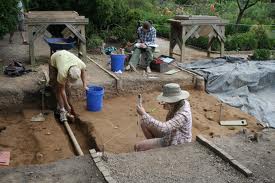 As with the independent collaborations, archaeological evidences discovered confirming items and events in the Bible serve to provide reason to consider the Bible and its teachings seriously. It has been remarked that NO archaeological evidence has been discovered that disproves anything mentioned in the Bible!
As with the independent collaborations, archaeological evidences discovered confirming items and events in the Bible serve to provide reason to consider the Bible and its teachings seriously. It has been remarked that NO archaeological evidence has been discovered that disproves anything mentioned in the Bible!
Independent Collaborating Information
|
Regarding |
Verse |
Confirming Artifact |
Significance |
Reference / Further Info |
|
Roman Census Order |
Luke 2:1,3 "In those days Caesar Augustus issued a decree that a census should be taken of the entire Roman world….everyone went to his own town to register. |
A census order from 104 A.D., requiring all to return to their homes to be counted was found in Egypt |
Confirms that census' were a function of the Roman government. An earlier census (dated ~6A.D.) was also found, although the dating is in dispute. |
Jesus: The Evidence; Ian Wilson; pg 47 |
|
Quirinius (a ruler) |
Luke 2:2 "(This was the first census that took place while Quirinius was the governor of Syria.)" |
An inscription describing Quirinius as a person of authority in Syria was found in Antioch |
Confirms a historical aspect of Luke's Gospel |
The Bible As History; Werner Keller; pg. 323 |
|
King David |
2 Samuel 5:4. 'David was thirty years old when he became King, and he reigned forty years.' |
A basalt stone monument dated ~900 B.C., discovered in Galilee, describes 'The House Of David' and 'The King Of Israel' |
Until this find in 1993, a record of King David has never been found outside of the Bible, leading many scholars to improperly believe that David was a fictitious character. |
Is The Bible True?; Jeffery Sheler; pg. 59 |
|
Nazareth, the Town In Which Jesus Was Raised |
Luke 4:16a. 'He went to Nazareth, where He had been brought up…' |
Many farming community relics, dated to the first century A.D., discovered in the precise location Nazareth was supposed to be. |
Until this find in the 1950's by Belarmino Begatti, no evidence of Nazareth was found, leading skeptical scholars to believe that the town was a Biblical fantasy. |
The Archaeology Of The New Testament |
|
Capernaum, a Town Which Jesus Visited |
Luke 7:1b,3. 'Jesus entered Capernaum…The Centurion head of Jesus and sent some elders of the Jews to him, asking him to come and heal his servant…"This man deserves to have you do this, because he loves our nation and has built our synagogue."' |
Captain Charles Wilson (1866) confirmed the location of the town. Virgilio Corbo (1974) discovered a synagogue there, dated to the early first century . |
Skeptics, once again requiring archaeological proof before they will believe anything, were again confounded at the discovery of this city. Corbo believes that we are justified in believing that this synagogue was the very one built by the Centurion mentioned by Matthew, Mark and Luke. |
The Archaeology Of The New Testament pg 99 |
|
A House In Capernaum, Where Peter and Andrew Lived, and Where Jesus Visited |
Luke 4:38. 'Jesus left the synagogue and went to the home of Simon.' |
The oldest Christian church yet discovered, attested by documentation dated ~350 A.D. describing a pilgrimage to the 'house of the first of the apostles [where] a church was made…Here the Lord cured the paralytic.' |
Also described in 570 A.D. as a basilica that preserved the house of Peter. |
The Archaeology Of The New Testament pg |